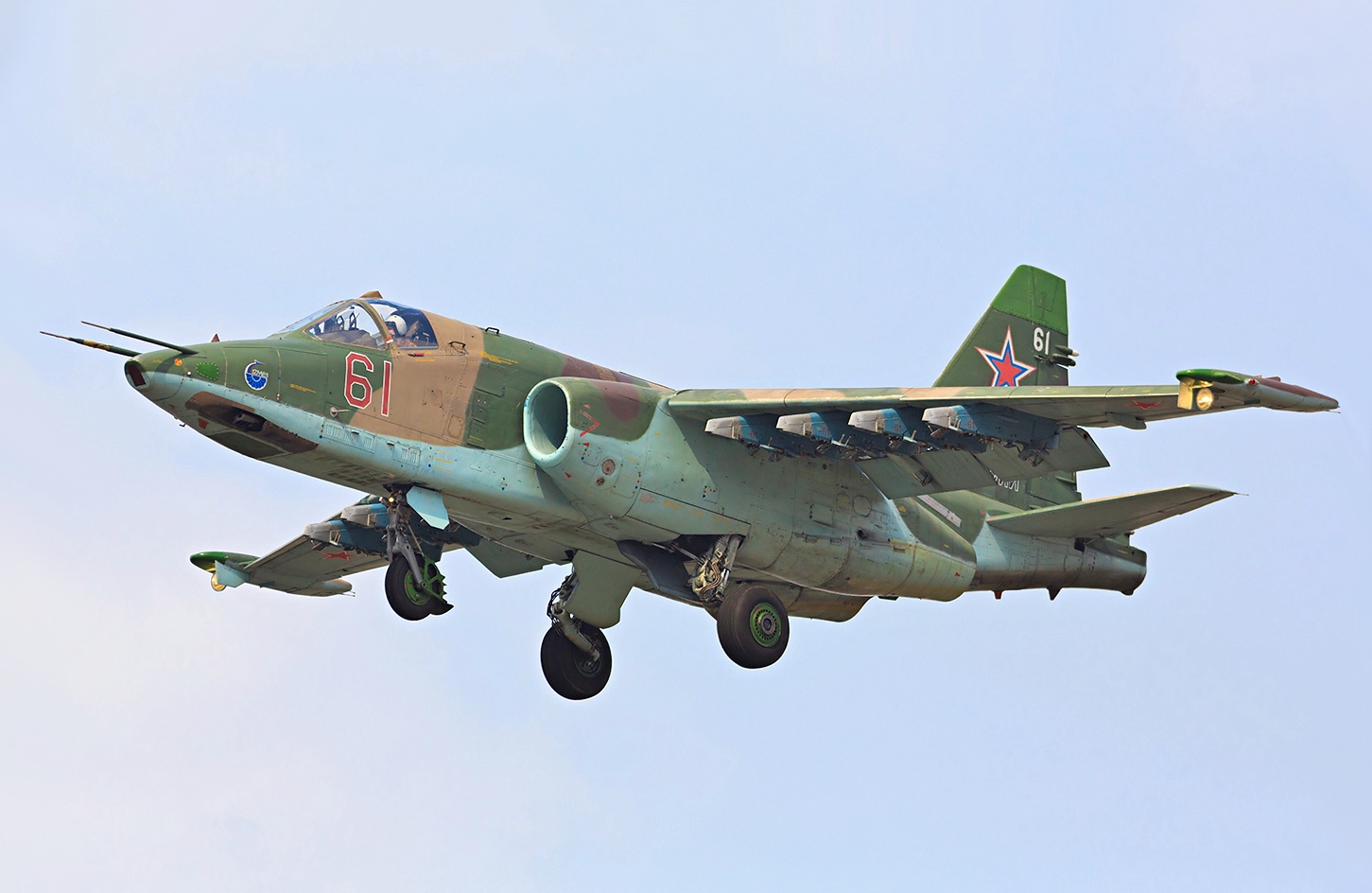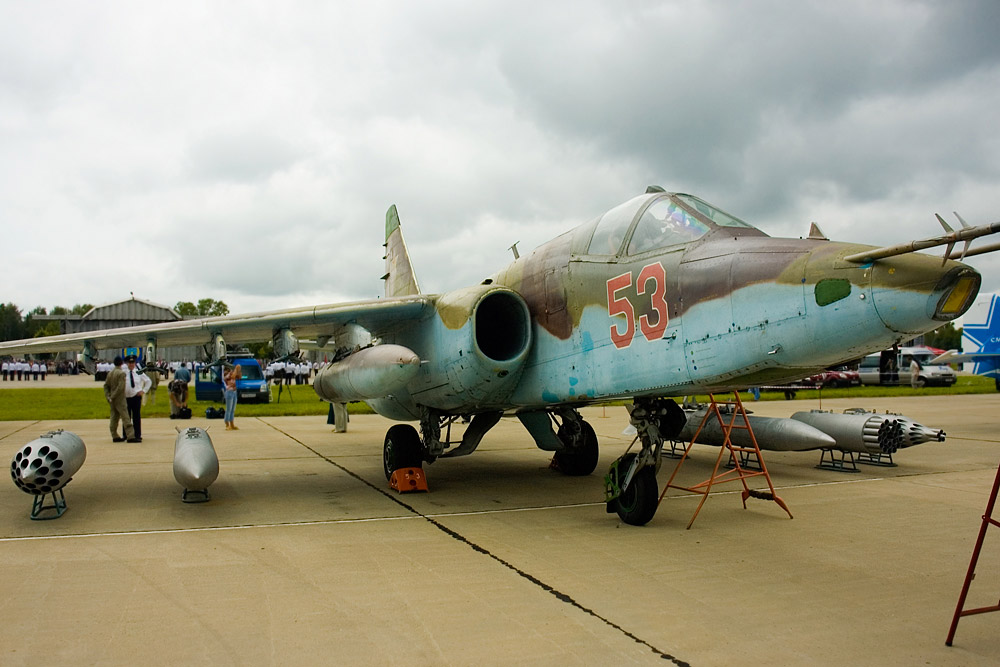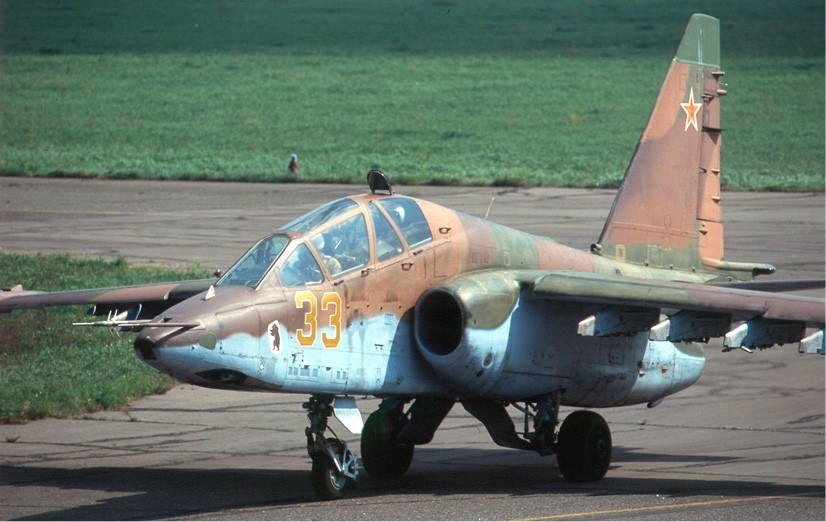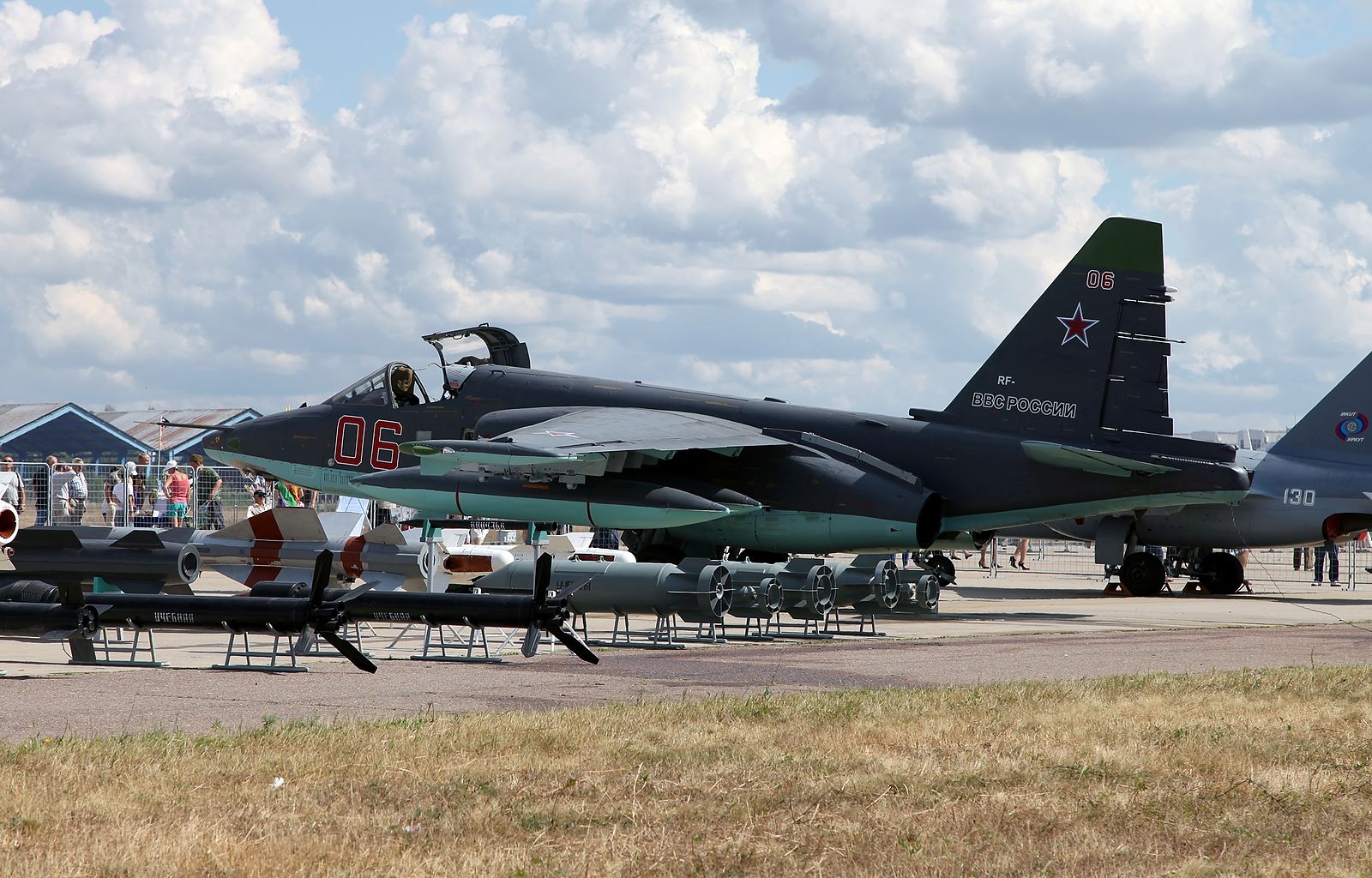
The Su-25, affectionately dubbed the “Frogfoot” by Russian pilots and officially known as the “Grach” or “rook,” is a subsonic, single-seat, twin-engine jet crafted by the Sukhoi Design Bureau during the Soviet era. Regrettably, it has faced considerable challenges in the ongoing Ukraine conflict.

Comparable to the American A-10 Warthog, the Frogfoot serves as Russia’s close air support (CAS) aircraft. However, it falls short of the A-10’s prowess in combat effectiveness.

Like its American counterpart, the Frogfoot is akin to a flying tank, albeit with slightly less armor and greater speed. Capable of ascending at a rate of 58m/s and reaching a maximum speed of approximately 590 miles per hour, this warplane certainly doesn’t top the charts in terms of speed.

With its formidable arsenal including a Gsh-30-2 30-millimeter cannon capable of firing 260 rounds, along with its ability to carry various air-to-air and air-to-surface missiles and rockets, the Su-25 is often likened to a Swiss Army Knife, albeit with a cannon instead of a corkscrew.

However, its combat effectiveness pales in comparison to its American counterpart, the A-10, primarily due to the absence of a dedicated cannon like the A-10’s Gatlin gun.

While the Su-25’s conventional cannon can discharge rounds rapidly, the A-10’s armored cockpit and superior loitering capability enable it to effectively engage targets at close ranges for extended periods, granting it a significant advantage in combat situations.

The Su-25 Frogfoot has a checkered combat history, with mixed effectiveness in various roles. Despite its performance in specific situations, its overall efficacy in modern warfare is limited, evident from its poor showing in conflicts like the Soviet-Afghan War and the Russian intervention in Syria.

Its design flaws, notably the lack of adequate armor and a durable cannon, hinder its ability to provide effective close air support, unlike its American counterpart, the A-10.

Vulnerable to enemy ground fire and lacking in endurance over the battlefield, the Su-25 falls short of meeting the standards expected of a close air support platform, often regarded as a budget imitation of the A-10.

The aging fleet and limited advancements of the aircraft over the years have rendered it increasingly ineffective in contemporary combat environments. This deficiency has been starkly highlighted in conflicts such as the ongoing Ukraine war, where the vulnerabilities of the aircraft have been painfully exposed, resulting in considerable combat losses.

In March of the current year, the Ukrainian government reported that at least six Russian Su-25s had been downed by Ukrainian air defenses, with expectations of further losses as the conflict continues to unfold.

The Su-25 Frogfoot embodies a promising concept that has fallen short of expectations.

This disappointment stems from the Russian approach of cost-cutting during production and neglecting necessary upgrades to align the aircraft with the demands of modern warfare, a shortcoming glaringly evident in both the Syrian campaign and the Ukraine War.

While the concept of close air support (CAS) is crucial for Russia, given the nature of missions undertaken by its military in recent years, the execution has been subpar.

The Su-25 fails to meet performance standards, highlighting a significant gap between the concept and its real-world application.
Relevant articles:
– Russia’s Su-25 Flying Tank Nightmare Is Real, The National Interest
– Su-25 Frogfoot: Russia’s Flying Tank Has Something The A-10 Can’t Match, The National Interest
– One of the greatest Su-25 pilots: The life and heroic death of Vladyslav Rykov, Yahoo

